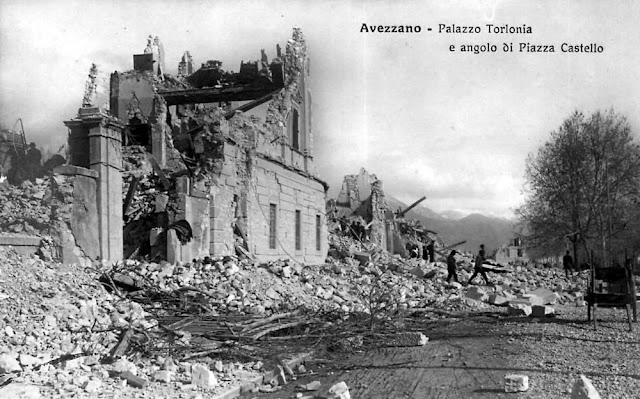On January 13, 1915, Avezzano earthquake, one of the biggest in the Italian, history shook the Marsica area in the Province of L’Aquila in Abruzzo. The tremors lasted about 20-30 seconds and had a magnitude of 6.7. The epicenter was located in the town of Avezzano which was completely destroyed. Almost 30,000 people were killed in this huge catastrophe. In the city of Avezzano alone, out of a total of 13,000 inhabitants, 10,000 were dead, 2,000 injured.
The earthquake took place at around 8:00 local time affecting thousands of people throughout central and southern Italy; the shaking was even felt in Rome. The town of Avezzano was toppled from the shaking and only one high-rise building survived. According to Robinson (1915), ninety-six percent of its population was eliminated almost simultaneously, the worst casualty zone. Several other settlements were demolished in the worst of the earthquake. This damage was attributed to the length of the shock, over 1 minute, and the enormous amount of energy released during the tremor. Compound motion of the fault was also a likely contributor to the earthquake's destruction. The structure of the housing also contributed to the collapse; many homes had been built from simple rocks of varying size and were not reinforced by mortar or even wood.
Damage of the earthquake was distributed throughout central and southern Italy. Rome experienced minor damage, including a fallen statue reported in St John Lateran and cracks on the Column of Marcus Aurelius. In fact, damage from the earthquake was diverse; either the location was destroyed or experienced little to no damage.
Survivors were pulled out slowly from the ruins of earthquake-stricken zones. One man survived in a barn for a period of 25 days living solely off of grains and water. After a short time the searchers ran out of space to dispose of the debris as it was too overwhelming in mass, forcing the workers to give up. As E.V. Robinson later described, the remaining “work of excavation seemed to go on in an unsystematic and half hearted way.”
Among those killed by the earthquake was Maria Gramegna, a promising young mathematician who had become a high school teacher in Avezzano.
























0 comments:
Post a Comment